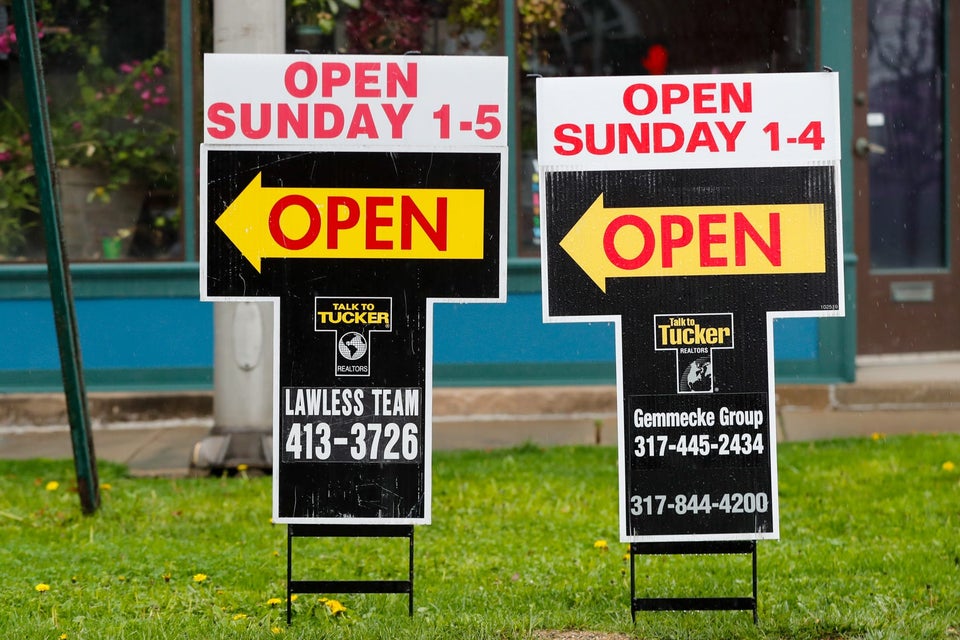Selling Your Home in a Seller’s Market
BY ELIZABETH WEINTRAUB
4/25/2021
Selling a home in a seller’s market is far different from selling a home in a buyer’s market. If you are lucky enough to be experiencing a seller’s market in your area, it is indeed a fabulous time to sell. Not only will your days on market likely be fewer, but you might also receive multiple offers—potentially driving up the sales price.
Drivers of High Demand
It’s generally a good idea to take advantage of pent-up demand because it’s the demand that drives competition. A larger number of people who are looking to buy a home should increase the odds you’ll make more money on the sale.
Some homes, especially those referred to as unique and difficult to sell in any real estate market, will generally stand a better chance of selling in a seller’s market as well.
Additionally, in some seller’s markets, the number of homes for sale might be few and far between. If there is not much to choose from, the nicest homes will attract the most attention. But the ugly homes will sell, too—simply because there aren’t very many options.
Another driver of high demand can be low interest rates on mortgages. In 2020, which was earmarked by the COVID-19 pandemic, interest rates dropped to historic lows. A report by Genworth, a mortgage insurance provider, found that the number of first-time homebuyers increased by 14% when compared to the year before.
Ways to Attract Multiple Offers in a Seller’s Market
Some people may think all you have to do is stick a sign in the yard and let the market take care of the rest. It might be easier to sell in a seller’s market, but it takes a lot more to sell a home than hanging a sign out front. It requires a strategy.

Tel: 551-580-4856 | Email: F.WINNIE.S@GMAIL.COM
Prepare the Home for Sale
Preparing your home for sale may or may not involve home staging, but it absolutely includes cleaning the home from top to bottom. Buyers will overlook small defects in a seller’s market because there are not enough homes to choose from.
Your home will sell faster with new carpeting if the existing carpeting is worn—but generally, bad carpeting will not stop an interested buyer in a seller’s market. However, you may want to limit carpeting to the bedroom areas and consider a hardwood look elsewhere.
Go on the Market on Friday
Friday is generally the best day of the week for home selling. A good strategy is to set listings to “go live” on Thursday night at midnight so buyers will discover them among the new listings when they get up Friday morning. Be sure all photos are color-corrected and perfected to make the online presentation sizzle.
Don’t forget to upload a virtual tour if the home lends itself to one, and release digital ads to Facebook and other websites.
Limit Showings
People tend to want what they think they can’t have. Don’t allow tours of your home at all hours of the day—restrict the hours and the days. This will force some buyers to tour when other buyers are also present, which can spark a competitive nature.
Lower the Sales Price
If you set the price just a hair under market value, this will attract more buyers. It also will leave some wiggle room for buyers to begin bidding over the asking price. It isn’t necessary, but it is a strategy that works well in some markets.
Do Not Set a Time for Offer Presentation
If you let buyers know that you will review all offers on a certain day at a certain time, you will lose some buyers. Buyers do not want to wait around to find out if their offer will be accepted.
There is also a large pool of buyers who will say they do not want to be involved in multiple offers. By the time they find out, it’s too late—they’re already involved somewhere else.
Review Seller’s Market Offers
After all the offers are received, make notes on each offer so you can easily compare them. Don’t look only at the price offered, but other factors as well, such as:
- The amount of the earnest money deposit
- Whether the offer is all cash—or if financed, the proposed type of financing
- Amount of down payment
- Waiver of standard buyer inspections or contingencies
- Seller costs, including possible proposal to pay the buyer’s closing costs
- Unusual requests or allowances
Some buyers will try the strategy of playing to your emotions as the seller: sending photographs of themselves, often including their children or pets. They may write you a letter, talking about why they want to buy the home and sharing some personal information.
If you receive personal letters, read through them to find out whether they are real letters or if they are copied from the internet.
Accepting an Offer
After you’ve had a chance to digest this information, you have a few choices as the seller. You can:
- Accept the offer you like the best
- Issue a counteroffer to one buyer or more than one buyer
- Ask all buyers to resubmit their highest and best offers
- Adjust the sales price and look for more offers
Usually, a seller can find an acceptable offer among the initial offers made. It is not always the highest offer, but if it is financed, it is the offer the seller believes is sufficient to meet the buyer’s lender’s appraised value.
If the home does not appraise at the price offered, it generally doesn’t matter how much more the buyer offered. Financing won’t cover it, and not every buyer is willing to bridge a shortfall in an appraisal and pay a lot more than market value.
Source: https://www.thebalance.com/home-selling-sellers-market-1798979
The Good News About the Insane Real Estate Market
You’ve lost your 10th bidding war. Are you radicalized yet?
BY HENRY GRABAR
4/23/2021

It’s a cutthroat competition for a scarce resource, pitting neighbor against neighbor and reinforcing the inequalities the pandemic has so cruelly exposed.
I’m talking of course about the housing market, which continues to hit milestones: record-low inventory; median home sale price up 13 percent from last April; prices up 18 percent in left-for-dead San Francisco, at 15-year highs in relatively affordable cities like Chicago, and out of control in places like Austin, Texas; Boise, Idaho; and Bozeman, Montana. In Bozeman, the owner of a local construction company stood on a winter day downtown with a cardboard sign: “PLEASE SELL ME A HOME.”
Anyone wading into this blood sport has memorized the indignities: If you want the house, waive all contingencies. If you want the house, escalate way over asking. If you want the house, bid before you even see it. If you want the house—sorry, you lost to an all-cash offer.
The causes of this crisis are many (pent-up demand, the soaring stock markets, low interest rates), but one stands out: Not enough homes! There are more real estate agents than there are homes for sale right now, and it’s not particularly close. New York City, for example, built fewer new homes in the boom years of the 2010s than during the depopulating 1970s, and has built fewer new homes in the past half-century than it did in the 1920s alone.
The promise of the pandemic’s remote-work revolution—a geographic reshuffling that might revive struggling regions and free knowledge workers from high-cost cities—has not yet panned out. Instead, everyone is going exactly where they went before. Far from changing the geography of demand, COVID-19 has given us a housing market that is basically the same, but worse.
Not great. One unfortunate, paradoxical effect of rising home prices is that they seem to lock in opposition to new housing. Joe Homeowner, obviously, is having the time of his life. But for buyers, too, new market-rate housing gets more and more out of reach as prices go up and up. It’s hard to blame tenants for scoffing at new construction when every new unit comes to market at five or 10 times the median income. Instead, this fuels the widely held belief that new housing makes neighborhoods more expensive.
But maybe the current crunch is sufficiently dramatic that it can convince new tiers of buyers that housing supply matters. Even “luxury” housing. (“Luxury housing,” as Nolan Gray writes in the Atlantic, is a marketingterm, not an official classification; in reality, new “luxury” apartments are usually cheaper than the existing older houses nearby.) No matter how many cranes you see, your city almost certainly isn’t building enough new units.
In a way, the housing shortage couldn’t come at a better time. The president’s infrastructure plan offers grants to communities that ease barriers to constructing infill housing in central, walkable neighborhoods—the type of housing we should be building. Such efforts have also gathered steam at the state level. The stars are aligned: We need more housing and we have the perfect place to build it. Not just in walkable places, but in places that aren’t yet walkable but would be with a little well-placed housing, commerce, and institutions. (Billions in mass-transit investment wouldn’t hurt either.)
Matt Yglesias writes this week that we get housing scarcity in spite of widespread agreement that abundance would be better, because the housing shortage fosters a kind of prisoner’s dilemma: Every city would be better with new housing, but having it on your block or in your school district comes with real costs. Let someone else build it.
But this diagnosis isn’t quite true: I don’t think most people even believe there’s a housing shortage. Their evidence to the contrary lies in downtown cranes, vacant apartments, far-off suburbs, and low-cost cities. Instead, the consensus has settled around a shortage of affordable housing—a phenomenon supposedly detached from the slow drip of new construction.
That view filters up to politicians, who feel little pressure to remedy the situation in the name of either racial justice or economic growth, in spite of growing pressure on both fronts.
What’s happening now in the real estate market feels like it is of another order of magnitude than past price run-ups in expensive places. A colleague looking for houses in the D.C. area lost on a house that went for $100,000 over asking price. Her agent saw a house with 10 pre-offer inspections and 32 offers. Her friend bid on a house that went for $320,000 over asking.
Sadly, those who win these all-out bidding wars will probably, suddenly feel that there is enough housing, and yes, we need affordable housing, but really affordable housing, you know? (And not here!)
But for every winner there will be many losers, and maybe the process can radicalize these would-be buyers, and their friends, and their parents, and the people they talk to. There really aren’t enough places to live. Those people can channel their frustration with bidding wars into political activism aimed at housing suppressants like parking requirements, restrictive zoning, and density limits. If appeals to neither historical wrongs nor economic growth get the job done, a strong dose of self-interest can’t hurt.
Source: https://slate.com/business/2021/04/real-estate-market-home-prices-open-houses-insanity.html
Flat-Fee MLS Listing Service in Northern VA

Helping For Sale by Owner (FSBO) & For Rent by Owner (FRBO)
DIY Landlord – Renting out Properties Safer and Quicker!
By David Chen
4/15/2021
Q. We purchased our first home some years ago, and are about to move to another home. We are considering to keep our first home as an income property. We heard of the free ads on CRAIGSLIST and zillow.com, but some landlord friends told us it could be a challenge to find qualified tenants through CRAIGSLIST and zillow.com. Is there any way to rent our property out quicker and safer with minimum cost? We are the kind of persons who would like to try things ourselves, and have some spare time.
A. You may have already done the initial research and have figured out the range of monthly rent of your property.
If the monthly rent is low such as $1600.00 or below, you may want to do it through CRAIGSLIST, https://postlets.com/, zillow.com, or similar web sites. The renters interested in the low-priced rentals may not go to the Realtors community for assistance.
If the monthly rent is $1600.00 or above, you may want to consider listing your rental on brightmls.com for the Realtors community to market it for you.
Bright MLS is made up of nine forward thinking MLSs (43 Associations) in the Mid-Atlantic region who put aside their differences and came together with a shared vision to help solve MLS market overlap and empower everyone to get more out of the MLS. Bright will serve parts of 6 states plus Washington, D.C. encompassing 85,000 real estate professionals who serve over 20 million consumers and facilitate approximately 250,000 transactions a year that are valued at more than $70 billion.
Dozens of public real estate websites (such as: zillow.com, redfin.com, brightmlshomes.com, etc.) pull data from brightmls.com through syndication. In a few hours, your listing will show up on dozens of websites and will get the maximum exposure. It is a lot quicker and safer finding qualified tenants than doing it through CRAIGSLIST and zillow.com. You may talk with a Realtor for assistance. Please be aware some Realtors take rental jobs, some don’t.
Over the years I have helped some landlords in the community renting their properties out with very low cost. A popular arrangement is to help the landlords ‘DIY’, which has been working well for those experienced landlords.
The good side of ‘DIY’ is that the landlords can ‘screen’ the potential tenants from the very beginning, have 100% control of the whole process, and enjoy the feeling of “on top of things”.
If you prefer minimum service, I can help you ‘DIY’:
1. I provide CMA, list your rental on brightmls.com, put a realtor’s lockbox at the front door if needed, provide the access log (if needed), support you through the whole process.
I charge a flat fee for the minimum service.
2. If you would like me to prepare the lease or review the lease, there is another reasonable flat fee. This service is optional.
3. You answer phone calls, work with the tenant (if the tenant doesn’t have an agent) or the tenant’s agent, run credit check, verify employment, check references, etc.. You pay the tenant’s agent (if there is one) directly on the move-in date – usually 25% of first-month rent.
If you need full-service, the commission is first-month rent – which includes the commission to be paid to the tenant’s agent.
If you need any customized service (between minimum service and full-service), we can work out an agreement.
Some information:
CMA stands for Comparable (some called Competitive) Market Analysis, that will help you determine the market value of your property for sale or for rent.
I use Sentry-key lockbox. Any Realtor with membership of NVAR (Northern Virginia Association of Realtors) or any other VA Realtors association can access and show the property.
The access log tells when the agents enter the property and their contact info. which can help you follow up with the agents.
If you like the DIY experience, I would recommend you to use the minimum service.
Please feel free to reach me if you need any assistance.
—
David Chen
Realtor (Licensed in VA) | Neighborhood Specialist (McLean, Falls Church, Vienna)
Libra Realty, LLC
dchenj@gmail.com
703-395-5406
WeChat ID: dchenj2015

Last update: 4/15/2021
Websites that will show your flat fee mls listings
4/15/2021
Almost all real estate websites that offer the ability to search brokerage listings use a data feed from the MLS called Internet Data Exchange (IDX) to pull in listing data. Depending on the number of sites tapping into your MLS, your listing could appear on hundreds of websites. We do not control the content of any of the websites listed below. updated periodically & subject to change at any time Here are some examples of national websites by area that pull listings from the MLS:
This block contains unexpected or invalid content.Attempt Block Recovery
- Zillow
- Trulia
- Move.com
- MSN.com
- REALTOR.com
- REMAX.com (in markets where they have an office)
- ZipRealty.com (in markets where they have an office)
- Yahoo.com / Prudential (in markets where they have an office)
- Google Base
- Redfin
- Yahoo Classifieds
- AOL Real Estate
- HomeGain
- Lycos
- Oodle
- Hotpads
- HomeSeekers
- ColdwellBanker.com
- Cenutry21.com
- HouseFront
- CondoQuickFind
Here are just a few examples of local media websites that pull listings from the MLS in their area:
- AZCentral.com (Phoenix, Arizona)
- Chron.com (Houston, Texas)
- DallasNews.com (Dallas/Fort Worth, Texas)
- DenverPost.com (Denver, Colorado)
- LATimes.com (Los Angeles, California)
- MySA.com (San Antonio, Texas)
- RGJ.com (Reno, Nevada)
- SignOnSanDiego.com (San Diego, California)
- StarBulletin.com (Honolulu, Hawaii)
- Tucson.com(Tucson, Arizona)

Here are just a few examples of local brokerage websites that pull listings from the MLS in their area:
- BishopRealty.com (Payson, Arizona)
- Boulderco.com (Boulder, Colorado)
- C21MoneyWorld.com (Las Vegas, Nevada)
- ColdwellBanker-Idaho.com (Coeur d’Alene, Idaho)
- Ebby.com (Dallas, Texas)
- Floberg.com (Billings, Montana)
- LongRealty.com (Tucson, Arizona)
- SantaFeSIR.com (Santa Fe, New Mexico)
- TB.com (Spokane, Washington)
Additionally, here are just a few examples of local REALTOR® Boards or MLS’s that have a public view portal. (Not all boards have this feature):
- ABQREALTORS.com (Albuquerque, New Mexico)
- AlaskaRealEstate.com (Anchorage, Alaska)
- AustinHomeSearch.com (Austin, Texas)
- HAR.com (Houston, Texas)
- HavasuRealtors.com (Lake Havasu City, Arizona)
- HICentral.com (Honolulu, Hawaii)
- mlslistings.com (San Jose, California)
- SFAR.com (Santa Fe, New Mexico)
- TARMLS.com (Tucson, Arizona)
These are just examples. Your listing could literally show up at hundreds of other websites.
Source: https://www.congressrealty.com/Flat-Fee-MLS-Listings/Sites-with-Listings/default.aspp



